Doesn’t it sometimes feel like life is all movement, yet going nowhere? Back and forth, up and down. But at the end of the day we’re right where we started. Or as Shakespeare and later Faulkner noted, life is but a tale told by an idiot, full of sound and fury, signifying nothing.
So in that vein, here’s today’s tale of a favorite American pastime. Paying to sit in one place, making no forward progress, but having an imaginary blast nonetheless.
As much as I am fascinated by vehicles that take you places, it should be clear that I’m also enthralled by conveyances that turn out to not actually convey you anywhere. Here in the U.S., such things have developed in the form of “kiddie rides”; and as we will eventually see, the same concept in general applies to many amusement rides.
By kiddie rides, I mean those machines that sit in commercial places and consume parental small change in return for a few moments of entertaining the kiddies. This assumes that the kiddies are entertained by some amount of janky music and being jiggled up and down. More often than not, these machines come in the form of a horse, although the ponies have always had animal and vehicular competition as we will soon discover.
From the looks of this horse that lives outside of a grocery store near me, clearly a whole lot of jiggling has been going on. Those round spots on the ride’s front legs are wear marks from years of little feet climbing up on the thing.
Kiddie rides have been around in one shape or form for just about 100 years. Odds are, similar devices entertained many of us well before we mounted things that actually took us from point A to point B. The typical kiddie ride starts at Point A, and then ends at Point A. Nevertheless it seems that this is just fine for the kiddies.
You might assume that the kiddie ride in 2025 is entering its twilight years. After all, kids today have a vast array of entertainment options and the idea that they could be appeased by a circular ride to nowhere, gently bobbing up and down, seems ridiculous. But as “one manufacturer of kiddie rides” [said for his industry in 1953]: “Our business depends on the kid’s imagination. Do you think the little ones will ever run out of it?”.
Maybe, maybe not. But let’s suspend some of our 21st century cynicism, fire up the old imagination, and take our own trip to nowhere except in our minds, into the memory palace and down the rabbit hole of kiddie rides.
I could produce plenty of primary and secondary sources about the kiddie ride industry and the larger field of “mechanical amusements”, but I’ll leave exploration of the vast depths of that material to those who may have a serious interest in “cheap” amusements, consumer culture and the history of technology. For everyone else, you can simply head to one of the best secondary sources that reported on the American entertainment industry – The Billboard (otherwise known simply as Billboard). That’s right, the same Billboard that later drilled itself into our heads via Casey Kasem’s weekly run down of the top 40 from Billboard‘s Hot 100 weekly chart.
As it turns out, The Billboard was founded in 1894 and lo and behold back then it was actually about billboards. Advertising, that is. For the majority of its epic run as a publication, Billboard devoted pages and pages to documenting the business of amusing and influencing the public. Over time, this coverage encompassed everything as prosaic as billboards and signs, to all manner of coin-operated concessions, carnivals, circuses, and of course records and jukeboxes.

For example, if you have ever wondered if anyone had developed the concept of putting chewing gum vending machines on public buses, Billboard is the source that answers that question. By the way, this silly idea – selling chewing gum on buses when everyone knows that all the gum you want is available for free under every seat – from nearly 75 years ago is still percolating somewhere in Europe. Turns out that someone is continuing to market bus vending machines. I’ll let you go explore that rabbit hole on your own.
We’ll be here when/if you get back.
Billboard ran a special supplement on Kiddie Rides in its January 31, 1953 issue. The supplement is really something you need to read in detail, and fortunately the entire archive of Billboard is available online and is easily searchable. This is the type of Internet treasure that totally makes me glad to be living in the future. You can access the entire searchable Billboard library here.

Billboard‘s January, 1953 special insert consists of 17 pages of articles, vendor profiles, and ad upon ad for kiddie rides. The overall thrust of the copy is to convince the reader that kiddie rides offer big profit to retail business. There are no less than two different stories discussing how a JJ Newberry store in Brooklyn, NY replaced their unprofitable soda fountain with a row of 14 kiddie rides that “now” pull in nearly $400/week. Double that during the peak retail month of December (“Kiddie Rides Replace Fountain at Brooklyn Newbury Store”. The Billboard, 1/31/1953. Page 71). Apparently that’s good money; and in a foreshadowing from 72 years ago of 2025’s AI-related employment trends, that $400 could be made without the waste and bother of hiring humans to jerk soda (or whatever a soda jerk does). Nope, where once there was a counter where people could sit and talk and interact with the employees, Newberry’s now had a row of 14 jiggling children, each lost in their own fantasies.
While mom and dad were free to leisurely shop – and spend money – in peace.
It’s All About The Horses (‘Tis Said They Eat Each Other)
What interests me the most about the insert’s 17 pages is the insight provided into what the best-selling, most popular, kiddie rides were in 1953. I was particularly surprised to find out that these were the three items shown in the above photo — horses, space ships/rockets and boats. Curiously, cars seldom figured into any of the lists of popular kiddie ride attractions.

I say “seldom”, but there was one ad. Note that this ad leads with the bullet that the Hot Rod car was the “perfect companion” to the kiddie ride horse and cost half the price of the horse. Seems that somewhat extraordinary measures were necessary to convince operators to deviate from the horse/rocket/boat sure shots.
The kiddie ride horse was invented in 1931 and patented by James Otto Hahs of Cape Girardeau, Missouri. Initial copies were made in Mr. Hahs’ home workshop, and eventually at his company – Hahs Machine Works in Sikeston, Missouri. Amazingly, Hahs Machine Works still seems to be in existence as a family-owned company (doing exactly what, I cannot quite figure out). Hahs called his invention the “Hahs Gaited Mechanical Horse” and produced it at the Machine Works through WWII. He had been fortunate to be able to position his invention at the 1933 Chicago World’s Fair and later at the 1939 New York World’s Fair where it was reportedly very popular. After the war, Hahs teamed up with the Exhibit Supply Company of Chicago that bought the rights to the Gaited Mechanical Horse and soon realized the tremendous potential of a coin-operated, kid-occupying, machine in the explosive postwar retail expansion. Think, shopping centers, suburban self-serve grocery stores… malls. From that point, the kiddie ride business, with horses at its forefront was off to the races.
Post-WWII, these new child entertainment devices were perfectly positioned to cash in on the national baby boom and in particular the Boomer generation’s overall enthrallment with horses. This mania for horses was certainly a product of the popularity of Westerns on the then new and wildly popular medium of television. This boom in Westerns really kicked off in the early 1950s; and by 1959, there were over 30 Western-themed shows running on prime-time television. That’s of course in addition to the constant daytime (after-school) broadcasting of Western films from the 1930s and 1940s. These plentiful and inexpensive films filled hours of daytime programming and stared the likes of Roy Rogers, Gene Autry, etc. and of course their horses (e.g., Trigger, the model for one of the most popular horse-based kiddie rides). So, in the 1950s, well into the 1960s, Westerns were everywhere, firing the imaginations of a vast generation of American kids.

The aforementioned Trigger, also produced by Chicago’s Exhibit Supply Corporation, was naturally popular due to its tie-in to the marketing prowess of Roy Rogers. The 1953 Billboard issue devotes an entire article to discussing how Roy and Dale (Evans, Roy’s movie/tv/real life wife) leveraged Double-R-Bar merch (“Trigger Proves Merchandise Tie-Ins Pay Off In Extra Volume, More Sales” Page 75. Nothing subtle there.).
Without a doubt, competition among the manufacturers of horse-based kiddie rides was intense.

Perhaps even more popular than kiddie ride Trigger was Champion, Gene Autry‘s horse. It may have helped that Bally, the producer of the Champion ride, was the General Motors of amusement machines for most of the 20th century. Bally had the Midas touch in what seems to have been a rather cut-throat, horse eating horse, competitive business. No doubt the power of Bally managed to put a lot of mid-century youth into Champion’s saddle.
Some of those kids may have had as good a time up there as did Miss Yvonne (“The Most Beautiful Woman in Puppet Land”) on the Playhouse’s well-restored Champion. Let’s hope so.
And Cows

As a general point, it does seem that first wave of Baby Boomers were simply all about riding on animals. As we’ve seen, horses of all sorts were favored, but there were also lions, rabbits, ducks, reindeer, and cows. Of course, if you’re talking cow, you really need to be talking about mid-century America’s favorite talking cow, Elsie.
Maybe I was just born a bit too late – by the time I came around in 1961 the post-WWII baby boom had pretty much petered out – but I’ve never understood the attraction of Elsie the Cow and her bovine nuclear family consisting of daughter Buleah, son Beauregard, and of course husband/bull Elmer. In fact, I found her essential physiology – a cow’s head on a human female’s torso plus hooves as “hands” – tremendously creepy.
My point exactly.
Nevertheless, Elsie (the advertising cow-woman) was another product of the 1939 New York World’s fair, and if that’s not enough for you, her “husband” Elmer (the advertising bull-man) invented Elmer’s Glue. Really, I kid you not.

Originally called “Cascorez” glue, Elmer’s Glue-All was invented by the chemical products division of Borden’s. I think that all dairies should have chemical products divisions. It contained the milk protein casein, but hopefully no other cow-derived substances. Anyway, after coming up with a catchy new name for the former Cascorez, Borden’s gave Elsie a husband, and her husband a job at the glue factory in 1953. Elmer’s glue was born.
I don’t believe that Elmer ever received his own namesake kiddie ride, but the Elsie ride was apparently quite popular and may have been the most popular cow-ride except for the one that Debra Winger rode in that movie (Here or even better, here. “She’s alright, I guess. I’ve seen better.”).

Elsie is still bringing in good money if you can find one. This one was offered at Barrett-Jackson several years ago.
More Driving, More Fury, But Ultimately Still Rather Circular
The dearth of kiddie-rides modeled on actual motor vehicles (versus cows and horses) shouldn’t get in the way of discussion of the bumper car, or as it was originally known, the “Dodgem” ride. Dodgems aren’t precisely kiddie rides, but are rather amusement rides. While they weren’t as conveniently located in front of the grocery store or at Woolworth’s/Newberry’s – Dodgems were always my go-to amusement, preferred much over the slow go-nowhere jiggle ride. Because, you know, they’re about actually driving something, even if you really don’t go anywhere aside from (maybe) around in a circle.

The supposed idea behind a Dodgem car, as expressed in its 1921 patent application was that these devices were intended to be driven, but through the addition of “novel instrumentalities to render their manipulation and control difficult and uncertain by the occupant-operator” fun would ensue. (Paragraph 10 in the application. I added the part about “fun”.)
Not unlike a Tesla Cybertruck or a Dodge Hellcat.
It seems that the Stoehrer family, that invented the Dodgem, expected occupant-operators to try to drive the things, but acknowledged that “dodging” other drivers would be challenging (i.e., fun) given the complications built into the user interface. The first Dodgem ride was installed on the Salisbury (Massachusetts) Beach boardwalk; and apparently riders quickly learned that the fun to be had came from slamming into other drivers while attempting to make forward progress.

The rest of course was history. Over the course of the next 100 years, subsequent generations of Dodgem “drivers” learned to forego making forward progress and to just slam into stuff. For fun.
This fun of course proved to be such that soon the Stoehrer and Pratt Dodgem Corporation quickly faced competition, notably from the Lusse Auto-Scooter company that produced the now-iconic Auto Skooter “bumper car”.

The pages of Billboard in the 1920s and 1930s were filled with ads from Stoehrer and Pratt slamming and threatening potential competitors. Apparently things got rather nasty, and the Stoehrers seemed to be a pretty litigious bunch. One of my favorite Stoehrer lawsuits (it’s all out there on the Internet…) was when Stoehrer sued Glen Echo Park (in Maryland, I lived a short bike ride from there) trying to prevent the park from operating Auto Scooters that used the chicken wire ceiling conductor that Stoehrer had originally installed on the park’s Dodgem ride. The courts sided with Lusse and Glen Echo by noting that Stoehrer and Pratt didn’t invent chicken wire and if the park wanted to run electricity through it to power another manufacturer’s vehicles, that was fine.
Curses! Foiled again by the ubiquity of chicken wire.

Stoehrer and Pratt must have had quite the reputation, since they somehow managed to sufficiently tick off the courts such that the memorable line of “the interveners [Lusse] had the right in respect to the articles before the court to require the plaintiff [Stoehrer and Pratt] to leave their customers alone and it was the plaintiff’s duty to leave them alone.” appears in the appeals court decision. In other words, Stoehrer needed to stop harassing other amusement parks for adding Lusse Auto Scooters to their Bumper Car/Dodgem pavilions. Or at least to find another argument than the one about the chicken wire.
Should anyone feel badly for Stoehrer and Pratt, their headquarters in the Bay State Building in Lawrence, Massachusetts (pictured above) still stands despite the company going out of business in the 1970s. Today, you could rent an apartment in that building as it’s been converted to residential real estate. That’s assuming you want to live in Lawrence, which as someone who has had an office in Lawrence, I’ll just say that you may want to think hard about that before committing to anything.
Lusse may still be in business. They have a website, although I suspect that this is mostly a tribute site to an officially departed company. Both Stoehrer and Pratt and Lusse likely succumbed to competition from Italy, which seems to have taken over the bumper car market. Those are Italian bumper cars in the picture above of me and the kid at the wheel.
For what it’s worth, in addition to auctioning kiddie rides, Barrett-Jackson has also sold vintage Auto Skooter cars. Ironically, the Auto Skooters are the bumper cars that seem to have taken over the pop culture imagery of what bumper car should look like. Even the Dodgem cars eventually found their way to looking pretty much like the Auto Skooter. Perhaps Lusse in the end got the last laugh on the folks from Lawrence.
If I Had A Boat
As long as we’ve diverged from our primarly topic of coin-operated kiddie rides and instead dived head first down the Dodgem/bumper car rabbit hole, it’s worth mentioning another bumper ride. This is one that’s proven quite successful in my area (due to a local arcade/picnic venue/corporate retreat/ice cream place)…bumper boats.
You probably get the idea of what these things are all about. Historically (if anyone is applying the term “historically” to bumper boats, and I may be the first person to do that), these devices bridge the gap between the popularity of kiddie ride watercraft and bumper cars. What I like about them is that due to the fact that they cannot employ electrified chicken wire – because…water – for power they instead rely on actual ICE motors. You sit in a thing where you are steering an outboard motor with handlebars and bashing into people.
Ok, bashing into people in a kind of fetid pond, surrounded by exhaust; but hey, it’s a totally hands-on authentic experience with all of the aesthetics of paying to sit at nose level to your lawn mower. In water.

Well, perhaps you have to be there. Or perhaps if you were/are there, you’d get seasick and exhaust-inhaling sick just like I do whenever I’m pressed to go to Bumper Boats. Usually, I try to bail out early and head for the associated mini-golf. As much as I hate golf of any sort, it generally beats the nausea of Bumper Boats.
Back to kiddie rides, I haven’t seen a boat-based kiddie ride in quite some time. I recall them from various jiggling locations – grocery stores, Woolworth’s and the like – as a kid. Honestly, I have never cared much for horses whether they were fiberglass or real, so perhaps for that reason I gravitated to the boat rides. I particularly like the steering wheel and probably would have chosen a car ride, if there had been any; but true to what Billboard reported, most jiggling locations had a horse, a boat, and maybe a rocket ship. Take your pick.
I recently found a somewhat more contemporary version of the kiddie ride rocket ship. I may have liked to ride in this thing if it had been available at a location near me in say 1966.
What of course I don’t get is why whoever produced this ride – or at least whoever operated it – didn’t change the name. Leaving a kiddie ride space shuttle named “Columbia” is a bit morbid. But maybe that’s just me. Or maybe it did get pulled out of rotation after the tragedy in 2003 and that’s why it is now residing at the barbecue restaurant in New Mexico where I found it.
All Our Yesterdays
This in a way brings us full circle in the kiddie ride discussion. While it’s unclear just how often modern children ride these things, they still hold tremendous nostalgia – and perhaps a degree of longing – for many adults. I can’t remember the last time I saw a kid jiggling on one of the grocery store horses like the one in our lede photo. In fact, I’m kind of surprised that my go-to grocery chain continues to maintains kiddie rides in front of all of its stores. And yet, they do still turn up not just at my grocery, but other places as well. This Cat In The Hat ride is a bit worse for wear, but it appears to be functional, at that barbecue restaurant in New Mexico. Likely this is quite entertaining (much more than can be said for the movie that inspired it) for the children and keeps them occupied while the parents relax with beers in this restaurant’s outdoor seating. Keeping kids occupied while parents consume…a mission as valid today as when Otto Hahs developed his horse in 1931 and as Billboard proclaimed it an amusement phenomenon in 1953.

This particular ride was produced by a British company called “Jolly Roger” in 2004. Its method of action is the basic slow jiggling accompanied by “music”. Most of the examples I’ve found online have absolutely awful, barely audible, sound tracks. Fortunately there’s one video that offers just the soundtrack. The Cat’s tune sounds remarkably like the the opening theme to the Simpsons.
The Simpsons, by the way, apparently declined to take a page from Roy and Dale’s playbook and have yet to license their intellectual property for kiddie rides. Although I’m told that there is currently a Simpsons amusement ride at Universal Studios.
Kind of too bad. I could imagine a Homer/Apu ride placed in front of, say, Trader Joe’s (aka “Swapper Jack’s“). Manjula’s exhortation of “Monkey! Monkey! Monkey!” could be the soundtrack.
While we’re waiting for that ride concept to be developed, there’s still an empty seat next to the Cat in Hatch, New Mexico.
Or on Sénior Horse, who seems to be regularly repainted, and ready to be ridden if not today, then certainly tomorrow and tomorrow and tomorrow.
















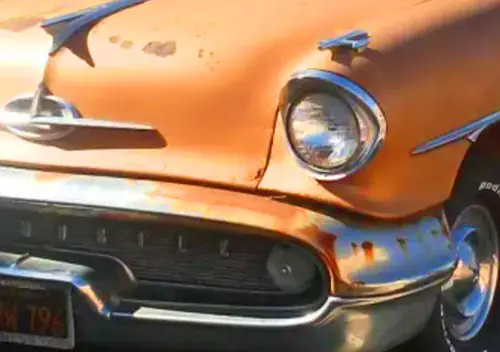
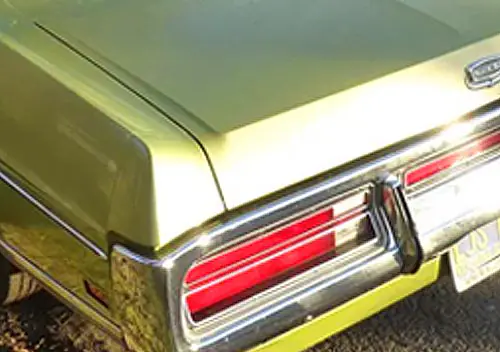
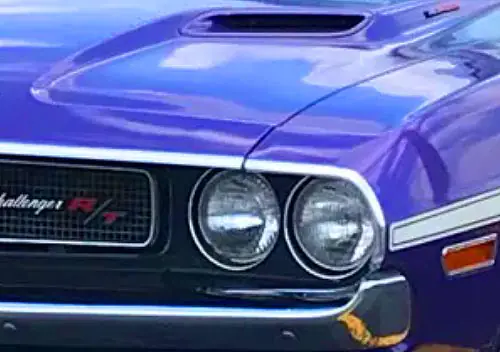


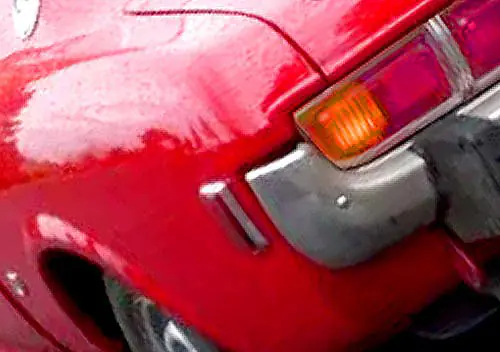

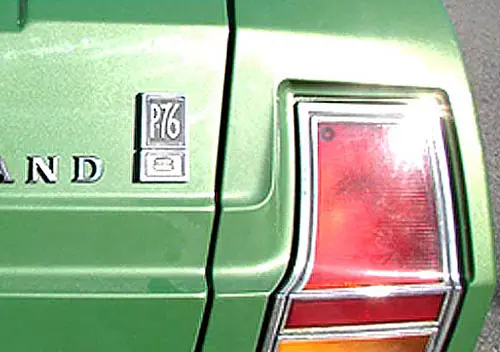
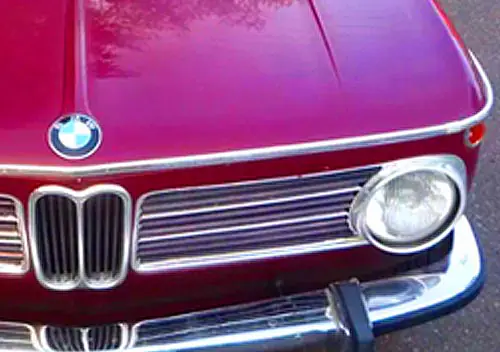

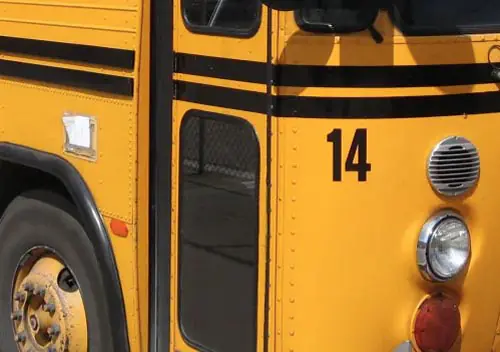
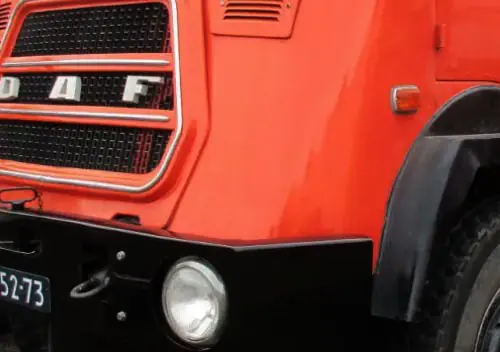
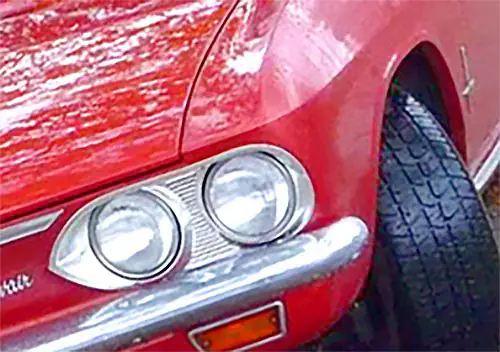
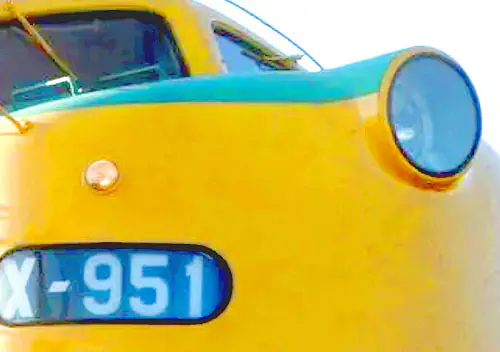
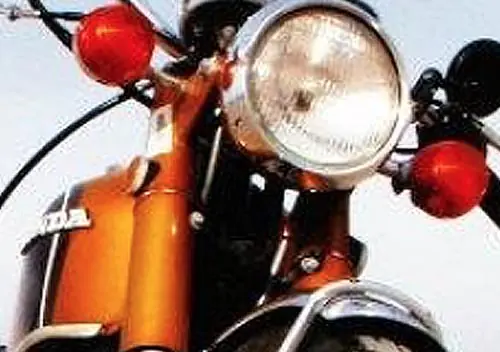
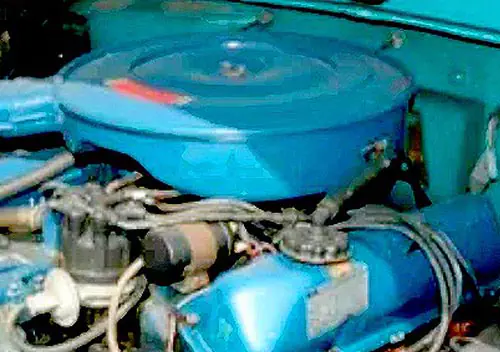
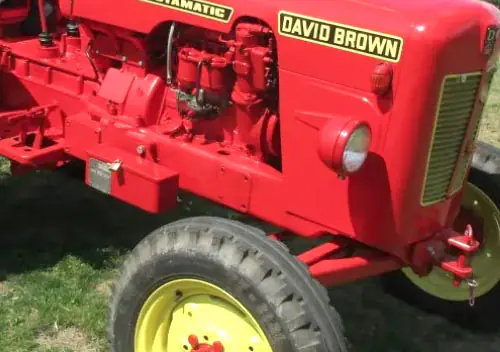
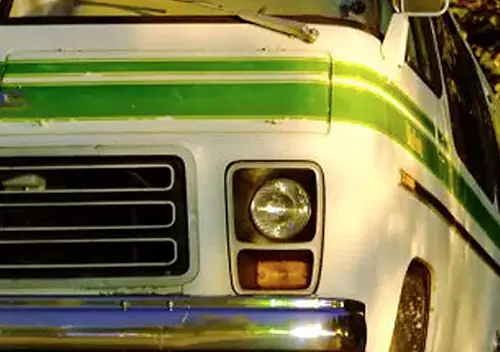

WOW, Jeff! This is an outstanding and comprehensive history of a subject that we never treat! Who has not ridden on one of these? Unless your Mom flat out said, NO! Thanksfor taking us through the history of a piece of Americana. Now, if you’ll excuse me, I have to saddle up. Giddy-up horsie!
My mom almost always said “NO!!” . I think I could count on one hand the number of times she said yes. And I don’t really remember anything except horses where we lived. And I’m not a horse fan ….
My mom didn’t always flat out say “NO”, but it happened more often it seems than I certainly wished.
I recall doing something that I just yesterday saw happen on the yellow horse in the article’s last picture…which is clambering up on the ride and pretending to bob/jiggle while my mom (or sometimes dad) refused to ante up.
I saw a dad put his kid on the yellow horse yesterday and then just stand there while the kid pretended to ride. Somehow I got the impression that this is what happens to this poor kid often.
It makes me want to carry a pocket of quarters and just treat kids when I see something like that.
Gosh, Jeff, that poor dad might not have had any change. The coin laundry in my building recently went app only and most likely I was one of the very few still using quarters. I have to admit the app works well but I kinda miss feeding quarters into the box and that resultant satisfying clunk. Great article, BTW.
Good point. All the more reason why I should have popped for the kid’s ride. I didn’t want to get in the guy’s space, not really knowing his situation.
I keep all of my coin-change in the car. For reasons that defy explanation.
Great article! A midwestern big box grocery/home/everything else store (Meijer) keeps one of the horses up front at all of the locations I have seen. The best part is that the ride costs only a penny. Will it be a nickel after the penny stops being minted? That was always a useful enticement to good behavior whenever Marianne took the kids shopping, and best of all was that it only cost 3 cents.
I remember the boats and rocket ships in my own childhood. I also remember that the rides always seemed more fun in the anticipation than in the actuality. The bobbing was kind of monotonous, and then you were dreading the sudden stop when you got to the end of the time your mother’s coin paid for.
I love the old Billboard magazines online, it is a great source for news about the music industry down through the decades.
I didn’t know that about Meijer, I’ll have to check it out the next time I’m around one.
Good point about the change. Perhaps that kid who I mention in the comments above just has a dad who never carries change. I mean, so many people don’t deal with coins.
And to think back in 1953, that Newberry store was grossing on average $400/week in dimes. Or perhaps nickles. I did the math on that the other day (assuming dimes) and came out with on average each ride at that Newberry’s in Brooklyn was being ridden 4 times an hour during business hours. That’s a whole lot of riding.
Meijer indeed. The price for a ride has been 1 cent since 1962. During the plague, they took “Sandy” away, and replaced her with a sign that read “Sandy is resting in her stable”. She is now back, and I see her in use quite often, treating the rider to gentle undulations, accompanied by the theme song from “Bonanza”.
There has been speculation of the fate of Sandy, with the impending loss of the penny. Adjusting for inflation, a dime, today, is worth about what a penny was worth, 60 years ago, so another turn on Sandy, for a nickle, would still be a bargain.
Wonderful article. I remember riding on a horse that looked like the “Trigger” above, but I don’t recall seeing any of the other critters.
Incidentally, Glen Davis, who produced the Davis three-wheeler in ’48, went into designing bumper cars after he spectacularly failed at real cars.
Thanks!
And thanks for pointing me to the Davis Divan. A car named after a couch that looks like a cross between a Studebaker, a Citroen DS, and a Messerschmitt Kabinenroller!
I remember these as a kid! We don’t “shop”, so I can’t recall seeing rides like this around anymore. I would think they would all be outlawed by this time. Kids would have to be strapped in, head and neck protection and a waiver signed in case of accident.
You’d think, right??!!
But it’s funny in America, the one place where we still follow the “You pays your money, you takes your chance” principle is in the amusement industry. It seems that you actually have to kill someone (and do it repeatedly) on a ride before maybe anything is done about it. Maybe.
It must be some kind of Carney exception that’s deeply rooted in the American psyche. 😉
Oh man, those bumper boats. I had totally suppressed them, but I now have a vague memory of feeling very futile in the face of my undoubtedly older adversaries. Speaking of futility, nice tie-in with nihilism and its various predecessors. 🙂
Thanks!
(and here’s one that brings it all back to cowboys)
At least once a quarter I’ll say, for no apparent reason, “Say what you want about the tenets of national socialism, Dude, at least it’s an ethos.” I’m not sure that line gets enough credit. 🙂
This is a great article! You certainly did not go Point A to Point A – you’ve hit many others along the way.
Sadly, I cannot remember the last time I saw one of these jiggle rides. I don’t think I’ve ever seen a boat version but have an 18 wheeler. Years ago my wife and I took turns giving our daughter a ride on bumper cars quite similar to the Lusse Auto Scooter you’ve shown. It was at a very vintage amusement complex in the Lake of the Ozarks around 2006 or so.
It was a pleasant surprise to hear about Mr. Hahs home location. It’s always good to hear about the success of others who are from the same place.
Yet another example of the the Carney Principle I mentioned above. I’m not sure how old your daughter was when riding the bumper cars at Lake of the Ozarks, but I figured out that my son was about 4.5 in the photo I used. While I doubt they’d have let him on alone (at least not in the daylight), it surprises me that they let him ride at all. He did have a blast though.
I though that you might get a kick out of the Cape Girardeau connection. I mean, I’d think that there’d be a statue to good old Otto in the center of town!
Gene Autry was a very smart businessman. The ad that says “ Ride THE Champion” is a clever way to allude to Gene’s horse named “Champion” without bringing the lawsuit that Gene most likely would have filed.
Good point!
A tour de force, wonderful article!
Can’t help it, but replace that glue squeeze bottle in Elmer the bull-man’s hands by a chainsaw and he reminds me of this guy…
Exactly. 🙂
What a ride that was; I’m still jiggling.
I was a bit too old by the time we came to the US to properly appreciate these, but was I ever obsessed about bumper cars. That’s where the bulk of my money went to when a carnival came around, or we went to the fair. No wonder I’m still a somewhat aggressive driver. Ka-boom!!
Thanks!
It has always impressed me how bumper car operators have tried to put across the idea that you’re actually not supposed to crash into other cars, when in fact everyone knows that’s the whole point of the enterprise.
I’m guessing that you were the kid bearing down on this lady in this photo. (if not you, then me)
My Irish parents were total skinflints. Well, when it came to tobacco and alcohol, they spent freely but on everything else it was a strict budget. For that reason, I don’t recall them ever paying for me to ride the horse outside the grocery store. The only time I can remember was when I was out with my aunt, who was also my godmother. She sprang for the ten cents that my parents never would.
Zellers was a former national discount department store, here in Canada.
The ‘Zeddy Wheel’ was featured, at every store entrance.
That’s terrific! And it demonstrates the idea that I’ve had about nearly every kiddie ride I’ve ever encountered…which is that they really would be so much more fun if they would only operate at about twice the designed speed.
And did I hear one of those kids in the video express the idea that they “needed” to buy that ride as part of the “everything must go” sale? A kid after my own heart.
I miss Zellers. It was the go to place for me for many things but especially for cheap kids’ clothes. I have two boys with a two year age gap. I could pass down the shirts but the pants always had holes in the knees. Zellers was the place to go for cheap kids’ clothes and stuff like rubber boots. I suppose Walmart has taken its place but it’s just not the same. With the demise of The Hudson’s Bay Company there is very little Canadian retail left.
Yes, Zellers was a good discount department store. The lowest price was the law!
I would say Giant Tiger is the closest remaining Canadian retailer, to the Zellers formula. They are mostly present in Eastern Canada. But they have stores in Alberta and Saskatchewan. Better pricing than Walmart, on many items.
https://en.wikipedia.org/wiki/Giant_Tiger
I enjoyed every word of this article, even though I can’t actually remember riding on or in any of these contraptions.
Somehow I never knew about the origins of Elmer’s glue… or that Elsie had a family.
Also, I’ve been in the Glen Echo pavilion numerous times since my wife plays in a concert band that holds concerts there. Yet, I didn’t realize it was originally a bumper car pavilion. Next time I’m there, I’ll bet I’ll see lots of signs I’d never noticed before calling out its history.
Thanks for all this!
Glen Echo has always been a fascinating place to me, but I profess having a thing for ex- or soon to be ex-amusement parks. Perhaps some of that comes from living for years near Glen Echo, and also from hearing my mom (who grew up in upper Montgomery County) talk about going there when it was an actual, functional, amusement park.
I particularly remember the mid-1970s when a lot of the the original park was still standing and looking pretty abandoned. That was before they filled in the gigantic swimming pool. I saw no reason why the National Park Service could not maintain a swimming pool. No reason at all. And I definitely remember the bumper car pavilion when it still had chicken wire on the ceiling (although no bumper cars).
There’s a link about the bumper car pavilion and how it’s looked over time: https://www.nps.gov/glec/learn/historyculture/bcp-rehabilitation.htm
The ride that always sparked my curiosity was the “Cuddle Up”…whose building still stood at least the last time I was there. What exactly was the Cuddle Up?
Wow what a great read, Jeff.
My Depression-era mom, bless her heart, would never have let us ride the pony in front of the Thriftway in Fairhaven. But she did relent once on a balsa-wood airplane inside the store. I think the ride was a dime and the airplane a quarter.
This story was great fun!
Thank you!
I remember those balsa planes well, and frankly would always settle for one of those versus the jiggle-ride. Getting one was a special treat.
Fortunately, they’re still around too…although now more than a quarter and in a plastic bag versus the paper/glassine bag they used to come in.
Oh yeah, opening that glassine bag was like the later experience of ripping into a new vinyl record. Sort of like Newman unwrapping the Entenmann’s Coffee Cake on Seinfeld…
This really brought back memories! Growing up in So. Cal, and remembering growing up on The Lone Ranger, and the other TV shows of the late 50’s and early 60’s, which led to my lifetime love of horses. My Mom used to put the money in the machine so I could ride it while she went in the store to do the shopping. Imagine a 4 or 5 year old girl sitting outside on one of these without anyone there to watch me. Its so sad what this world has become. But I finally did get a real horse when I was ten, and had them until 2010, when I had to put the last one down. I wish I still had at least one, but my older body and not so full check book says no.
Thanks Teresa.
I guess one question is whether parents back in those days really just left their children on rides outside the store and then proceeded to shop without worry…or did they maybe keep one eye open, glancing either at the former soda fountain area or out the big glass storefront windows, checking a bit on the kids. We’ll probably never entirely know.
This super-fun throwback-themed post had *everything*. Thank you, Jeff!
Thanks Joe!
Now, your mission – should you choose to accept it – is to look around your fair city and see how many of the former headquarters and factories for these kiddie rides (etc.) still stand. According to that Billboard supplement, Chicago seemed to have a disproportionate number of businesses devoted to this industry. Which, I guess makes sense given its central location and overall greatness.
You never know what you may find and it’s always fun to run up on factory sites that while seemingly long forgotten are still there producing their original product. Such as the time I encountered the Tootsie Roll factory here in Boston (Cambridge, actually). Still cranking out Tootsie Rolls (and Junior Mints) since the 19th century. With only this one sign outside to indicate what’s going on inside.
What a great article and the comments too .
I vividly remember these and the boats etc. too, for some reason I never wanted to ride .
There were two of these at the .99 CENTS store not fr from my house, one was a miniature merry-go-round .
Yes, the ‘music’ was always awful .
Some years back a guy here in So. Cal. managed to rebuild, repower and atcually REGISTER a bunch of Lusse AutoSkooters, maybe as golf carts ? .
I dunno but there were lots of atricles at the time showing 50 + year olds driving them in traffic near the beach .
-Nate